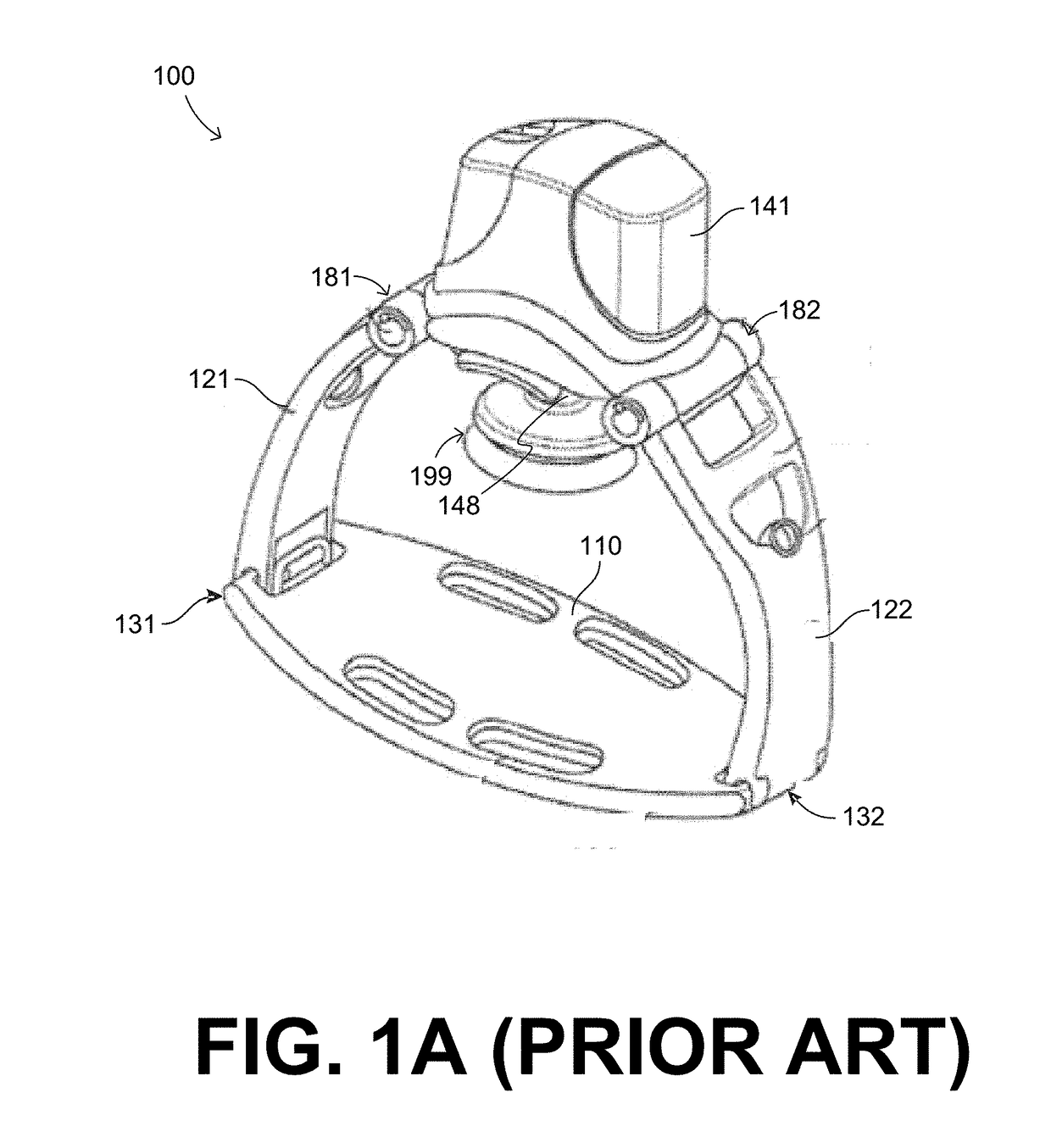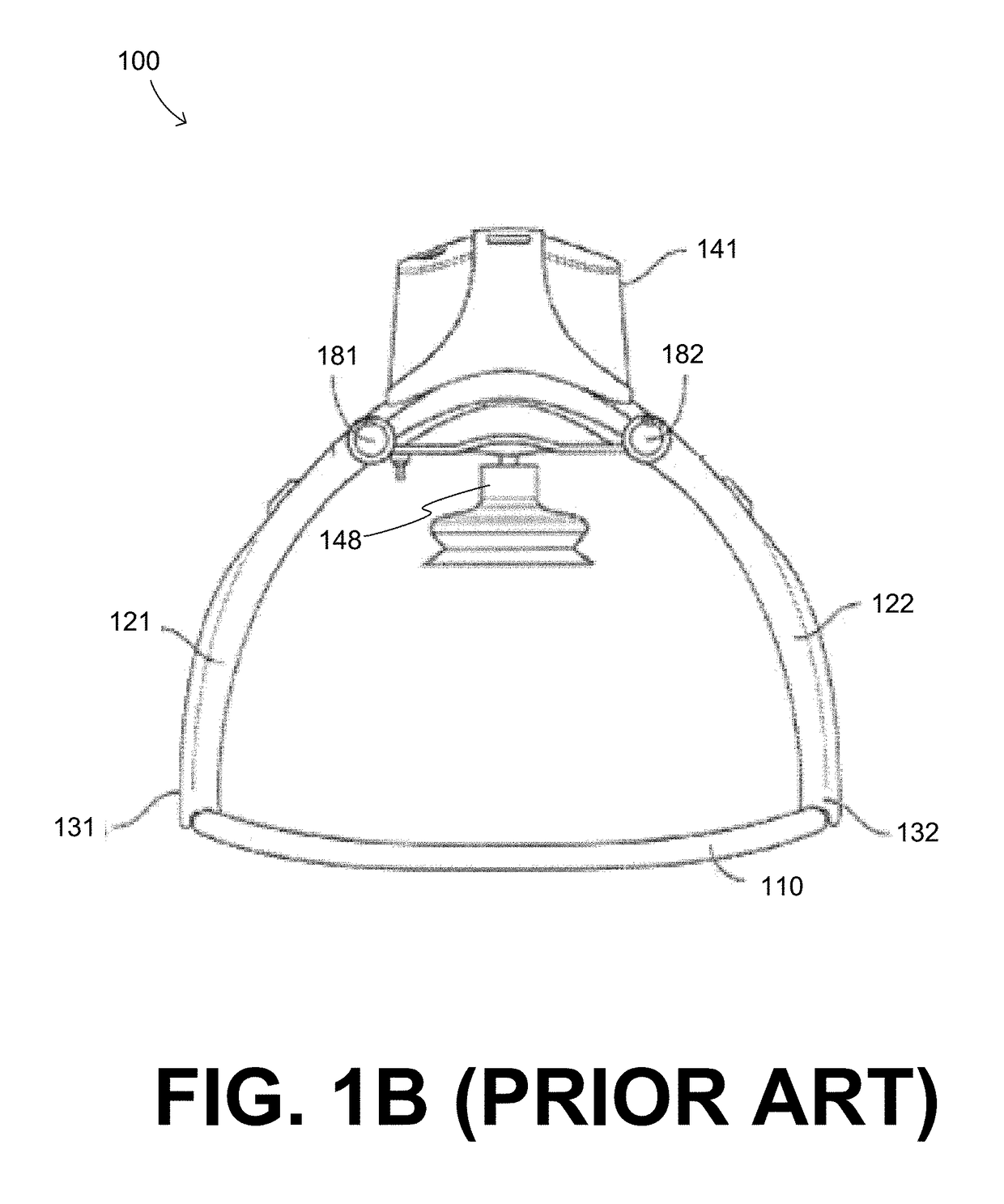Cpr chest compression system with motor powered by battery located away from the motor
a chest compression and motor technology, applied in the field of cpr chest compression system with motor, can solve the problems of ineffective manual cpr, patient soon death, damaged organs like the brain, etc., and achieve the effects of less weight, less likely to tilt, and faster drained battery
- Summary
- Abstract
- Description
- Claims
- Application Information
AI Technical Summary
Benefits of technology
Problems solved by technology
Method used
Image
Examples
Embodiment Construction
[0041]As has been mentioned, the present description is about Cardio-Pulmonary Resuscitation (CPR) systems that are usable by a rescuer to care for a patient. A conventional such system is now described with reference to FIGS. 1A and 1B, which is presently being sold by Physio-Control under the trademark Lucas®.
[0042]A CPR system 100 includes components that form a retention structure. The components include a central member 141, a first leg 121, a second leg 122 and a back plate 110. Central member 141 is coupled with first leg 121 and second leg 122 using joints 181, 182, such that first leg 121 and second leg 122 can be partly rotated around joints 181, 182 with respect to central member 141. This rotation can help minimize the overall volume of CPR system 100, for easier storage at times when it is not used. In addition, the far ends of legs 121, 122 can become coupled with edges 131, 132 of back plate 110.
[0043]These couplings form the retention structure that retains the patie...
PUM
 Login to View More
Login to View More Abstract
Description
Claims
Application Information
 Login to View More
Login to View More - R&D
- Intellectual Property
- Life Sciences
- Materials
- Tech Scout
- Unparalleled Data Quality
- Higher Quality Content
- 60% Fewer Hallucinations
Browse by: Latest US Patents, China's latest patents, Technical Efficacy Thesaurus, Application Domain, Technology Topic, Popular Technical Reports.
© 2025 PatSnap. All rights reserved.Legal|Privacy policy|Modern Slavery Act Transparency Statement|Sitemap|About US| Contact US: help@patsnap.com



